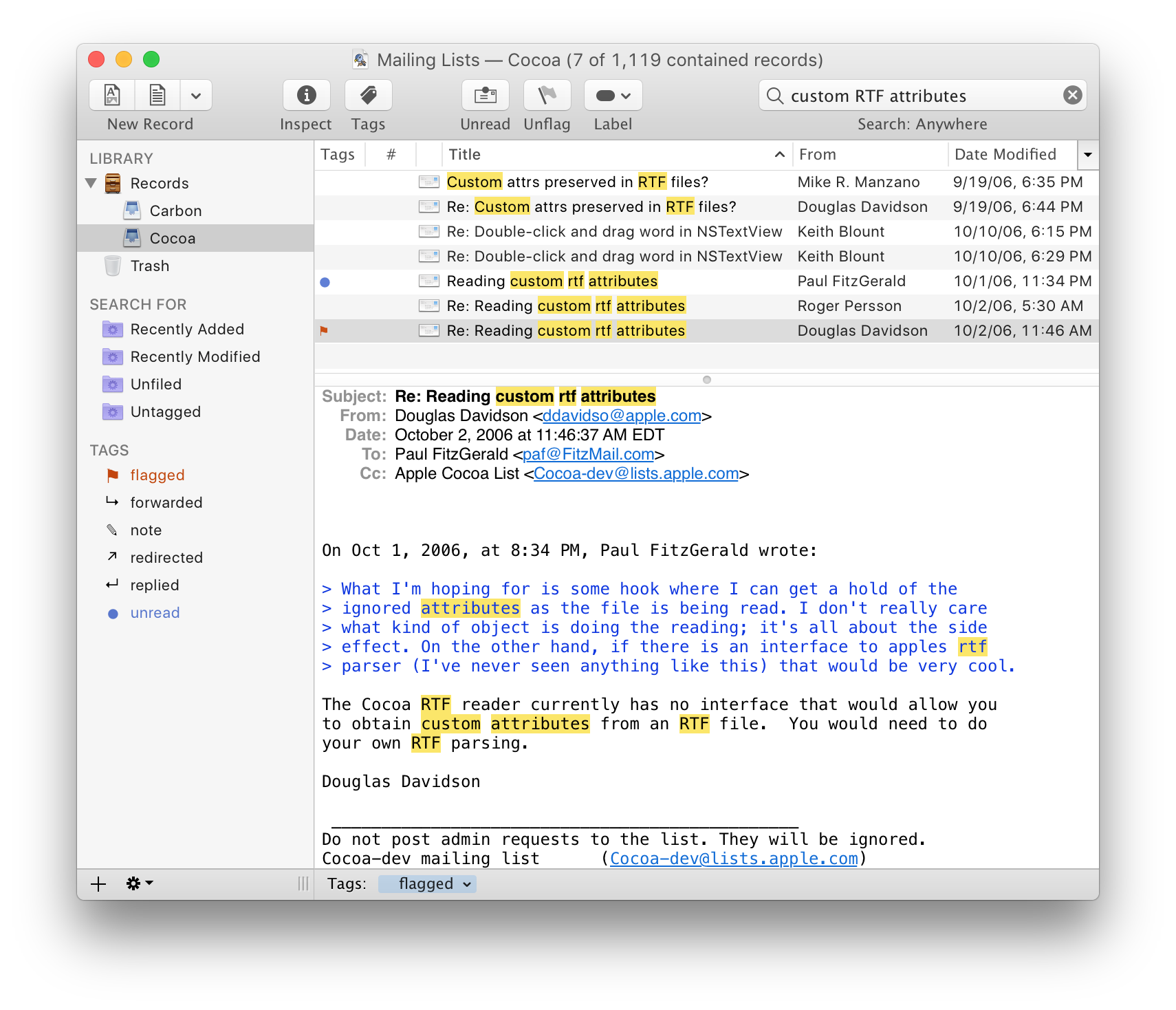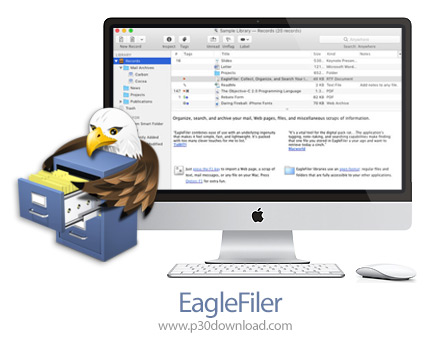
When you export, EagleFiler tries to convert the messages to as standard a format as possible, and this can lead to more successful imports. Browse different types of files using a familiar three-pane interface. Use it to collect information from a variety of sources. It lets you archive and search mail, Web pages, PDF files, word processing documents, images, and more. This is because EagleFiler stores the messages exactly as you imported them, and some mail programs are not very tolerate of format differences. EagleFiler makes organizing and managing your information easy. It will not have file size limits, or file type limitations. Indeed, you can add any file to the library by clicking the file in Finder and pressing the capture key. You can save emails to the library using the capture key or by dragging from Apple Mail into the library. A library also contains some housekeeping files maintained by EagleFiler. You can print a PDF to Eaglefiler from pretty much any application. You can have as many libraries as you like, and each library is just an ordinary folder in the Finder, containing files that are your data each snippet is simply a file in a standard data format.

Note: If you’re unable to import a mailbox file that’s stored in EagleFiler, it may help to select the messages and export them as a new mailbox file. For example, both Journler and DT (and EagleFiler, and notoriously MacJournal) have anemic. EagleFiler’s chief document type is called a library. Select the file and then click the Import button. Select the Import messages from an MBOX-format text file radio button and click the right arrow. Starting soon, we’re also adding export and share functionalities into chat.
#Eaglefiler file type mac os x
Here are specific instructions for some common e-mail programs:Ĭhoose File ‣ Import Mailboxes…, select the mbox files radio button (or Other if you have Mac OS X 10.4), click Continue, and then choose the folder containing the exported mailbox file.Ĭhoose File ‣ Import…, select the Contacts or messages from a text file radio button, then click the right arrow.

All Mac e-mail programs can import files in this format. "EagleFiler natively stores e-mail as mailbox files using the standard mbox format. I’m wondering if this is an EF issue, has anyone else been able to import mailboxes from EF? EagleFiler says that it stores (and exports) mail in standard mbox format.


 0 kommentar(er)
0 kommentar(er)
